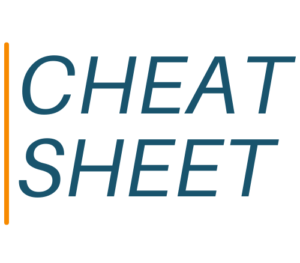
Cheat Sheet: Health Tech for Seniors
We scoured the landscape and found only seven reporters who cover health tech for seniors. This can’t be right — will you share the ones we’re missing?

We scoured the landscape and found only seven reporters who cover health tech for seniors. This can’t be right — will you share the ones we’re missing?

It’s rare to find someone who writes only about healthcare tech products and related news — but this list comes really close. We also chose for how frequently a reporter writes. In the interest of focus, we omitted healthcare security and healthcare funding reporters…
 Of all the topics in healthcare, this one may seem a bit random, but the democratization of healthcare was picked by experts as a trend to watch in 2019; Stanford published a big report on it. Here are the few journos who have picked up on the trend.
Of all the topics in healthcare, this one may seem a bit random, but the democratization of healthcare was picked by experts as a trend to watch in 2019; Stanford published a big report on it. Here are the few journos who have picked up on the trend.
In one Google Doc, we analyze 116 articles across five publications, capturing authors, headlines, URLs and whether the article was positive, negative or neutral in tone. In another, we list the 118 editorial sections contained in 18 leading healthcare publications, accompanied by lists of Tier 1 and Tier 2 journalists, tables on site traffic (SimilarWeb) and coverage volume (IT Database), F2F events and more.
Healthcare IT trades — like all trades — are in the relationships business. They typically make their money through F2F events, awards programs and premium services. Surprisingly few require registration or paid subscriptions, but all of them can be counted on to behave respectfully toward healthcare business. You won’t see the next Theranos being taken down in the trades.
In part 2 of the SWMS Healthcare Deep-Dive, we package 2019 healthcare trends as spotted by HIMSS and Rock Health. These are broad, general technology-based and care-based trends, summarized in bullets.
 Even in a realm as “vertical” as healthcare, stories are still stories. Technology is transforming both business and society. Companies and their leaders face crises. Startups succeed and fail. Conversely, much is unique to healthcare. Few industries are more regulated, depend more on new science, and have such a direct impact on life and happiness.
Even in a realm as “vertical” as healthcare, stories are still stories. Technology is transforming both business and society. Companies and their leaders face crises. Startups succeed and fail. Conversely, much is unique to healthcare. Few industries are more regulated, depend more on new science, and have such a direct impact on life and happiness.
YOUR ACCOUNT
FRIDGE NOTES
Former NYT reporter and Google Cloud EIC Quentin Hardy also interviewed Eric Savitz about his career and move to GM. Good reading.
The UK-based newsletter company called Trending Now uses AI to scrape what’s trending across 27 areas of B2B. Press Gazette has additional detail. The company employs ten, none of whom are journalists (by traditional definition).
The full union membership needs to ratify it on July 24, but it looks like no editors can be laid off or suffer a salary cut if the publication goes big in its use of generative AI. More detail here from Neiman.
Goldman Sachs took 32 pages to say pretty much that. The media business may turn out to be an outlier, an industry perfectly suited to synthetic, multilingual words, sounds and images at scale. As for everyone else, well, the global consultancies will learn the truth first because they have rushed to monetize Gen AI — they aren’t yet succeeding.
Three free one-month subs are available from SWMS, no catches or gimmicks. Get in touch for details. BT is among the best tech newsletters out there.